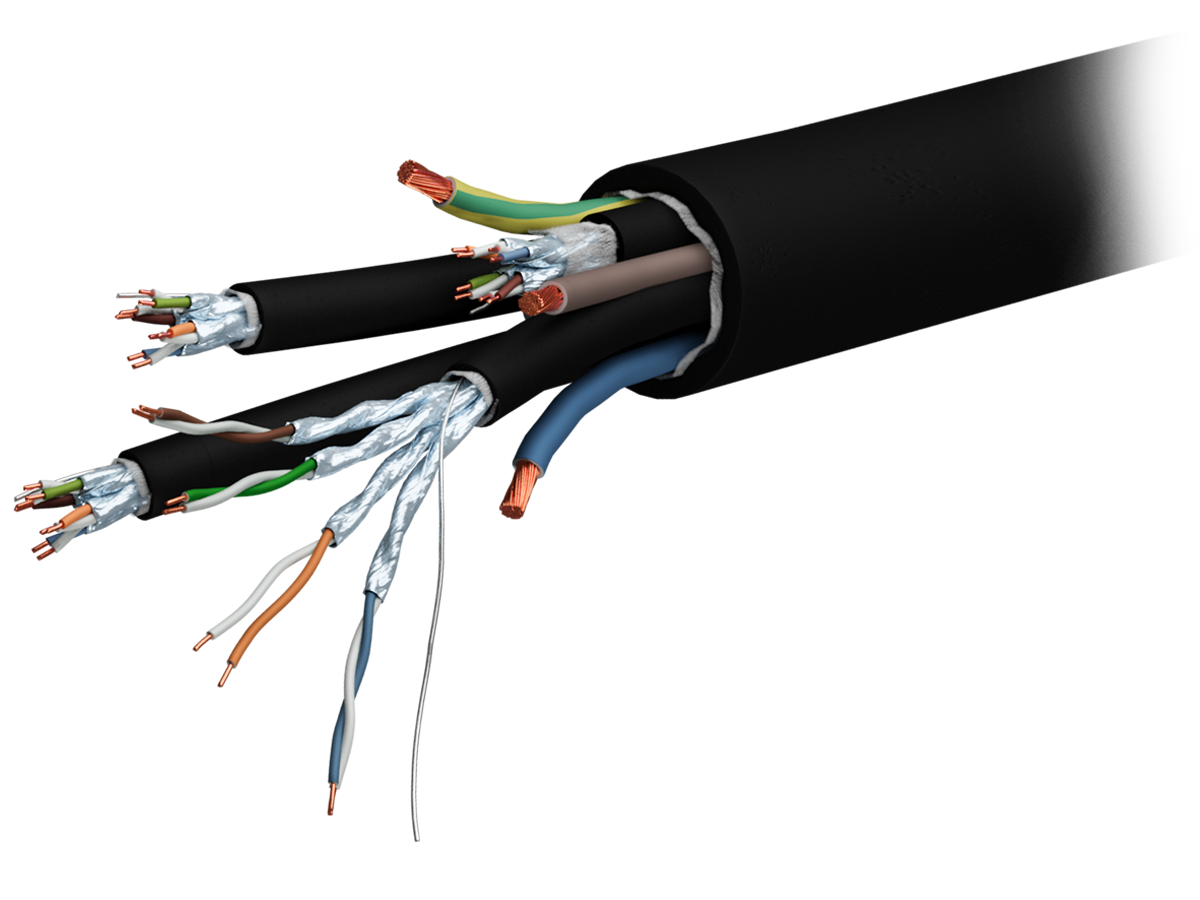Hybrid cables have become increasingly popular in various industries due to their versatility and efficiency in handling multiple types of signals and power in a single cable. In this comprehensive guide, we will explore what hybrid cables are, their types, a buying guide, practical tips for using them, their applications, and answers to frequently asked questions.
What is a Hybrid Cable?
Hybrid cable is a combination of different types of cables bundled together into a single sheath. Typically, hybrid cables integrate power and data transmission capabilities, allowing for the simultaneous transport of electrical power and data signals through one cable. This design optimizes space, reduces installation complexity, and enhances overall system performance.
Key Characteristics:
Multifunctionality: Combines power, data, audio, video, and control signals.
Efficiency: Reduces the need for multiple separate cables, saving space and simplifying installation.
Flexibility: Suitable for various applications, from telecommunications to industrial automation.
Types of Hybrid Cables
Hybrid cables come in various configurations depending on their intended use. Here are some common types:
Power and Data Hybrid Cables:
Description: Integrates power lines with data communication lines, typically used in devices that require both power and data connections.
Applications: Surveillance cameras, wireless access points, and remote sensors.
Fiber Optic and Power Hybrid Cables:
Description: Combines fiber optic strands for high-speed data transmission with copper wires for power.
Applications: Telecom networks, FTTH (Fiber to the Home), and long-distance communication systems.
Audio and Power Hybrid Cables:
Description: Includes cables for audio signal transmission alongside power cables, often used in professional audio equipment.
Applications: Concerts, theaters, and public address systems.
Control and Power Hybrid Cables:
Description: Merges control signals and power lines, essential in industrial automation and control systems.
Applications: Manufacturing plants, robotics, and automated machinery.
Buying Guide for Hybrid Cables
When purchasing hybrid cables, it’s crucial to consider several factors to ensure the cable meets your specific needs:
Application Requirements:
Determine the type of signals and power the cable needs to carry (e.g., data, audio, video, control, power).
Assess the environmental conditions (indoor, outdoor, temperature range, moisture, etc.).
Cable Specifications:
Conductor Material: Typically copper or aluminum for power, and copper or fiber for data.
Shielding: Necessary for preventing electromagnetic interference (EMI), especially in data cables.
Jacket Material: Must be durable and suitable for the environment (e.g., PVC, LSZH for indoor use, or UV-resistant for outdoor use).
Compliance and Standards:
Ensure the cable complies with relevant industry standards (e.g., UL, ISO, TIA/EIA).
Verify electrical and signal performance specifications to match your requirements.
Length and Flexibility:
Determine the required length and consider the cable’s flexibility and bend radius, especially for complex installations.
Future-Proofing:
Consider potential future needs to avoid frequent replacements or upgrades.
Tips for Using Hybrid Cables
Proper Installation:
Follow manufacturer guidelines to ensure proper installation and avoid damaging the cable.
Use appropriate tools and techniques for stripping, terminating, and connecting hybrid cables.
Labeling and Documentation:
Clearly label hybrid cables to avoid confusion during maintenance or troubleshooting.
Keep detailed documentation of cable routes and connections.
Testing and Maintenance:
Regularly test hybrid cables to ensure they are functioning correctly, using appropriate testing equipment.
Perform periodic inspections to check for signs of wear, damage, or degradation.
Handling and Storage:
Handle hybrid cables with care to prevent kinks, cuts, or other physical damage.
Store cables in a clean, dry environment to avoid exposure to elements that could degrade their performance.
Uses of Hybrid Cables
Telecommunications:
Essential in modern telecom infrastructure for transmitting power and high-speed data over long distances.
Broadcast and Media:
Used in broadcasting to carry audio, video, and power signals in one cable, simplifying setup and reducing clutter.
Industrial Automation:
Integral to factory automation, combining power and control signals for machinery and robotics.
Security Systems:
Employed in surveillance systems, providing both power and data to cameras and sensors.
Renewable Energy:
Utilized in solar and wind power installations to combine power and data for monitoring and control purposes.
Residential and Commercial Buildings:
Used in smart buildings to integrate power, data, and control signals for various systems like HVAC, lighting, and security.
FAQs about Hybrid Cables
- What are the advantages of using hybrid cables?
Hybrid cables offer space-saving benefits, reduced installation time, and improved system efficiency by consolidating multiple types of signals and power in one cable.
- Can hybrid cables be used outdoors?
Yes, but it’s essential to choose hybrid cables with appropriate outdoor ratings, such as UV-resistant jackets and weatherproofing.
- How do I determine the right hybrid cable for my application?
Evaluate your specific needs regarding signal types, power requirements, environmental conditions, and compliance standards. Consulting with a manufacturer or specialist can also help.
- Are hybrid cables more expensive than traditional cables?
Initially, hybrid cables can be more costly, but they often result in overall cost savings by reducing installation complexity and the need for multiple separate cables.
- How should I maintain hybrid cables?
Regular inspections and testing, proper handling and storage, and following manufacturer maintenance guidelines will help extend the life of hybrid cables.
- What are the common challenges when installing hybrid cables?
Challenges include ensuring proper termination and connections, preventing electromagnetic interference, and managing the physical routing of a more complex cable structure.
Hybrid cables are an innovative solution that simplifies the transmission of power and multiple types of signals in various applications. Understanding the types of hybrid cables, knowing how to choose the right one, and following best practices for their use can significantly enhance your system’s efficiency and reliability. Whether for telecommunications, industrial automation, or residential use, hybrid cables provide a versatile and efficient way to manage complex cabling needs.
Contact Linden Photonics to get a Hybrid Cables quote or Call Us at (978) 392-7985



One comment
Iqbal
08/11/2023 at 4:16 pm
Really informative blog article. Awesome.